The Asante IntraCore 3524-2T is a high-performance, 24-port managed 10/100Base-TX switch with two Gigabit Ethernet uplink ports, providing a cost-effective solution for workgroups and small businesses. With advanced features like VLAN support, Quality of Service (QoS), and security mechanisms, the switch delivers enhanced network performance, flexibility, and protection. The intuitive web-based management interface simplifies configuration and administration, making it easy to set up and maintain a reliable and secure network.
The Asante IntraCore 3524-2T is a high-performance, 24-port managed 10/100Base-TX switch with two Gigabit Ethernet uplink ports, providing a cost-effective solution for workgroups and small businesses. With advanced features like VLAN support, Quality of Service (QoS), and security mechanisms, the switch delivers enhanced network performance, flexibility, and protection. The intuitive web-based management interface simplifies configuration and administration, making it easy to set up and maintain a reliable and secure network.








-
 1
1
-
 2
2
-
 3
3
-
 4
4
-
 5
5
-
 6
6
-
 7
7
-
 8
8
Asante IntraCore 3524-2T User manual
- Type
- User manual
- This manual is also suitable for
The Asante IntraCore 3524-2T is a high-performance, 24-port managed 10/100Base-TX switch with two Gigabit Ethernet uplink ports, providing a cost-effective solution for workgroups and small businesses. With advanced features like VLAN support, Quality of Service (QoS), and security mechanisms, the switch delivers enhanced network performance, flexibility, and protection. The intuitive web-based management interface simplifies configuration and administration, making it easy to set up and maintain a reliable and secure network.
Ask a question and I''ll find the answer in the document
Finding information in a document is now easier with AI
Related papers
-
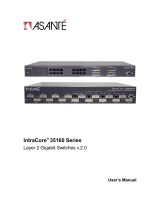 Asante Technologies 35160 User manual
Asante Technologies 35160 User manual
-
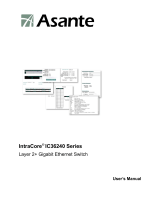 Asante Technologies IC36240 User manual
Asante Technologies IC36240 User manual
-
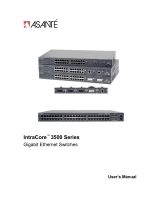 Asante Technologies IntraCore IC3524-2T User manual
Asante Technologies IntraCore IC3524-2T User manual
-
 Asante Technologies IntraCore 3624PWR User manual
Asante Technologies IntraCore 3624PWR User manual
-
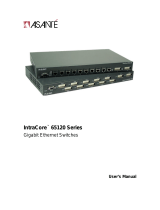 Asante Technologies IntraCore 65120 Series User manual
Asante Technologies IntraCore 65120 Series User manual
-
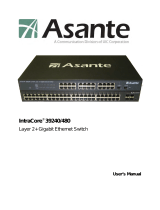 Asante Technologies 39240 User manual
Asante Technologies 39240 User manual
-
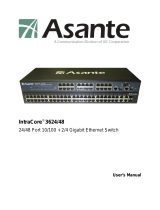 Asante Technologies Switch 3624/48 User manual
Asante Technologies Switch 3624/48 User manual
-
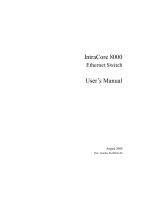 Asante Technologies IntraCore 8000 User manual
Asante Technologies IntraCore 8000 User manual
-
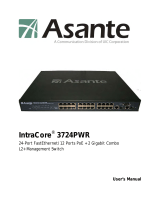 Asante Technologies 3724PWR User manual
Asante Technologies 3724PWR User manual
-
 Asante Technologies 9000 User manual
Asante Technologies 9000 User manual
Other documents
-
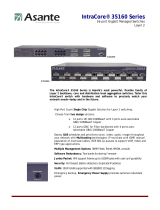 Asante Technologies IntraCore IC35160G User manual
Asante Technologies IntraCore IC35160G User manual
-
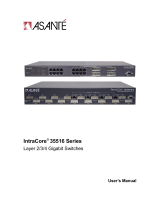 Asante Technologies 35516 User manual
Asante Technologies 35516 User manual
-
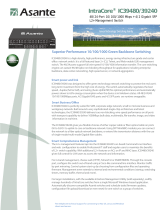 Asante Technologies IC39480 User manual
Asante Technologies IC39480 User manual
-
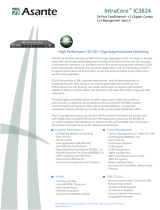 Asante Technologies IntraCore IC3624 User manual
Asante Technologies IntraCore IC3624 User manual
-
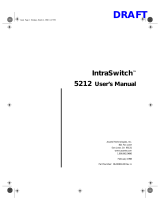 Asante Technologies 5212 User manual
Asante Technologies 5212 User manual
-
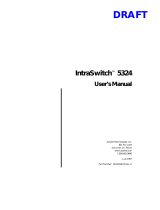 Asante Technologies 5324 User manual
Asante Technologies 5324 User manual
-
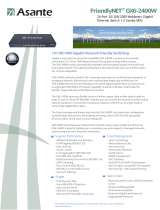 Asante Technologies GX6-2400W User manual
Asante Technologies GX6-2400W User manual
-
Cisco Systems Dial NMS User manual
-
Juniper SECURITY THREAT RESPONSE MANAGER 2008.2 - SNMP AGENT GUIDE REV 1 User manual
-
Hewlett Packard Enterprise JD377A Datasheet
























